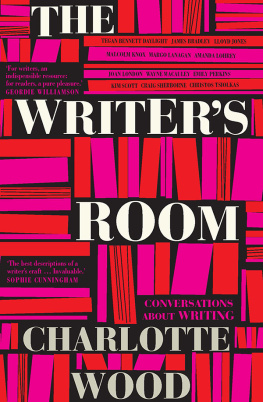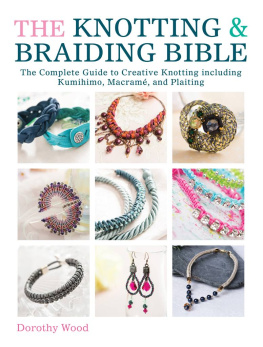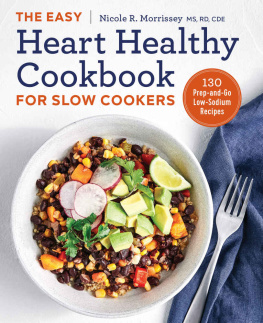Copyright 2022 by Noah Wood. All Rights Reserved.
Stop. What. Youre. Doing. This isnt going to be a tiny fine print youll never see because Id much rather be honest and open with you about how much I value mine and my teams work. To be honest, I dont know if you will ever intend to reproduce, copy, distribute (etc.). This book with anyone, but just so were on the same page, here goes:
You arent allowed to make any print or electronic reproductions, sell, re-publish, or distribute this book in parts or as a whole unless you have express written consent from me or my team.
We have worked extremely hard on all of the content youll find here, so please help us maintain it by not sharing it with other people. Other than that, please be careful when making our recipes! If you arent sure how to carry out some steps, do some research before going any further, especially if it involves using a knife or an open flame. My team nor I take any responsibility for any of the interpretations given to our recipes. See you in the kitchen!
Free Bonus Books

I want to keep things short and sweet becauselets face it, and the juicy content is inside my cookbook. Thus, I wanted to thank you for your support by making a small deal with you. If you like my cookbooks, what would you say about receiving some free recipe e-books? All I need is that you subscribe so that we can send them your way, along with some occasional emails on special offers and discounted prices for more of our books.
It literally only takes like 10 seconds to subscribe! And I also promise we wont spam you with emails. We really want to thank you for the free e-books, but we need an email address to send them to, right? In the long run, youd also be saving money because youll be notified of special offers and such, but just think about it. If youre up for it, new recipes are waiting to be delivered right to your inbox for free!
https://noah.subscribemenow.com

Table of Contents
Introduction

We all know that overeating salt is bad for us but whats the problem, exactly?
First and foremost, salt raises our bodies blood pressure, which has various effects and manifestations on our health.
When your blood pressure is raised, this puts a strain on our arteries. And its harder to pump the blood around our bodies. As a result, if you have had raised blood pressure for some time, your arteries will have to adapt to the job they need to do. They become stronger and thicker. But this is not a good thing because the space in the arteries becomes narrower.
Thus, it just increases your blood pressure as blood is pumped through a smaller space. Eventually, the arteries either burst or clog and then you have a big problem. The organs dont acquire the nutrients they need; they become damaged, and often the result is fatal.
If the artery in question that bursts or becomes clogs is in the heart, the result is a heart attack. A reduction in the blood reaching the heart results in frightening and painful angina.
If the artery in question is in your brain, then a reduction in blood supply can lead to dementia, while a clot or blockage leads to a stroke.
I think its fair to say that many of us will have witnessed the devastation of such conditions first-hand, possibly with grandparents. And obviously, everyone wants to avoid these life-changing, dangerous, and fatal health implications for themselves.
The great news is you can! And you can still eat great, tasty food.
How Much Sodium Should You Consume?
Current recommendations are that Americans should eat around 1500-2300mg of sodium per day. But you can easily exceed your daily recommended amount just by having breakfast cereal and lunch at a fast-food restaurant.
The problem with salt is that it makes things taste great and cheap. Manufacturers and fast-food giants literally lace food with cheap salt. Sadly, they clearly care more about fat profits than their customers health.
However, with the recipes in this book, youll find it easy to stick to these recommendations. And by aiming for a lower daily amount of sodium in your diet, you can expect to see results fast. In fact, your blood pressure can reduce in just two weeks.
Living with Less Salt
Living with less salt can be challenging at first, but once you adjust to the new lifestyle, you will find that you actually taste more flavors in foods when they are not masked by excess salt. I have designed the recipes in this book to be flavorful without the use of added salt, but if you find yourself needing a pinch of salt, adding a bit here and there is better than continuing to eat processed foods loaded with excess sodium. As you become accustomed to using less salt, you will learn to cook and enjoy food in a new way. Try the following strategies to keep your diet low in sodium.
Say No to Processed Foods
Processed foods are often loaded with sodium; even items that you wouldnt think of as salty. By eliminating processed foods from your diet (or, at least, greatly reducing them), you can lower overall sodium intake almost instantly. Foods such as breads, canned goods, cereals, cheese, crackers, and prepared sauces can be very high in sodium. When you do use processed foods, be very discerning about your choices; read labels and select the lowest-sodium options.
Cook at Home
When you cook at home using fresh ingredients, you know exactly what goes into your food, which lets you control how much sodium you eat. You can reach for fresh and dried herbs, citrus juices, garlic, ginger, and dried spices to create tons of flavor in foods. You wont miss out on flavor, variety, and interest, which can help you maintain a low-sodium diet for the long term.
Adjust Your Taste Buds
It may take some time to retrain your taste buds, but it is possible. You have likely been overconsuming salt since childhood, so it may take a while to break the habit. Unless instructed by your physician to adhere to a low-sodium diet immediately, it is best to give your body time to adjust. Begin by cutting out processed foods and replacing them with homemade options or healthier alternatives.
Season with Fresh and Dried Herbs
Using fresh herbs is an effortless way to add loads of flavor to your meals, as well as additional vitamins. Plant leaves contain phytonutrients and antioxidants, which work to protect the body from inflammation. Consider growing your favorite herbs in a pot by a sunny window to have a continuous supply year-round. Dried herbs are inexpensive and can be substituted for fresh in most cases; use 1 tsp. of dried herbs in place of 1 tbsp. of fresh herbs.
Sprinkle with Seeds and Spices
















